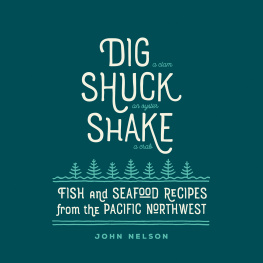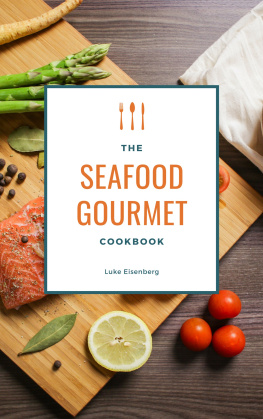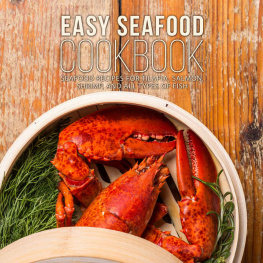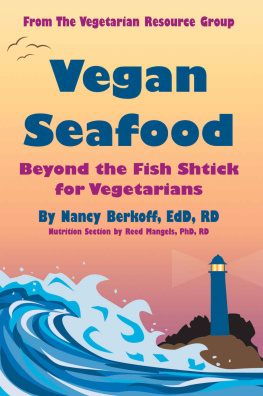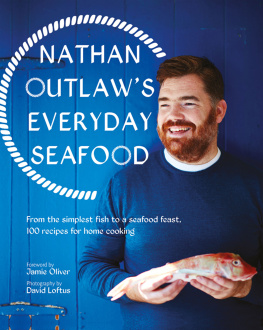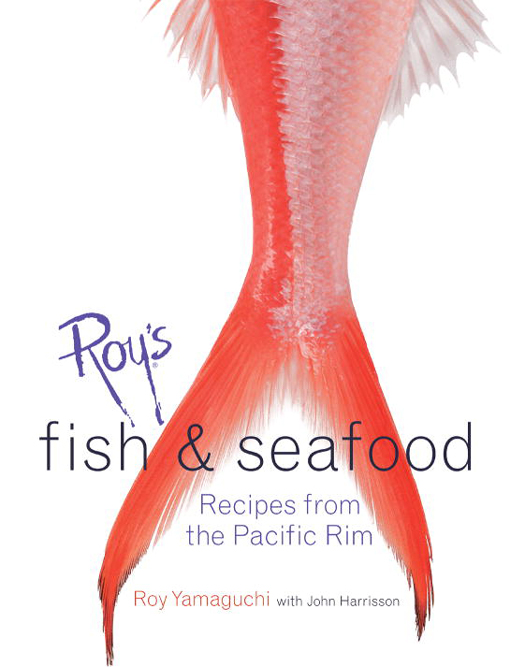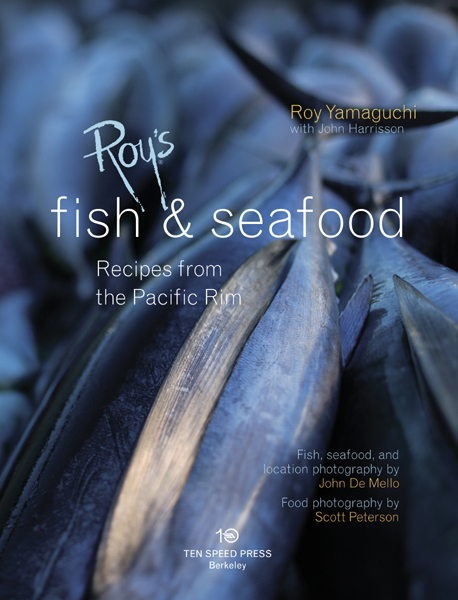Copyright 2005 by Roy Yamaguchi with John Harrisson
Front cover photo, fish, seafood, and location photography 2005 by John De Mello
Food photography 2005 by Scott Peterson
Tom hurst
All rights reserved. Published in the United States by Ten Speed Press, an imprint of the Crown Publishing Group, a division of Random House, Inc., New York.
www.crownpublishing.com
www.tenspeed.com
Ten Speed Press and the Ten Speed Press colophon are registered trademarks of Random House, Inc.
Library of Congress Cataloging-in-Publication Data on file with the publisher.
eBook ISBN: 9780307801081
Hardcover ISBN: 9781580084826
Cover design by Toni Tajima
Food styling by Roy Yamaguchi, Karen Shinto, and John Sikhattana
Prop styling by Emma Star Jensen
Thank you to the following people and organizations for their contributions to the fish, seafood, and location shots: Mike Straight at Maggie Joe; Glenn Tanoue, president of Tropic Fish; Jo Rasmussen, sales representative at Tropic Fish; Honolulu Fish Auction and the United Fishing Agency; Romys Kahuku Prawns and Shrimp; Kapono Zukevich; James Ashe of Waialee Fisheries for the Kona crab and lobster; and Nishimoto Fish Market.
v3.1
To the late Tom and Warren Matsuda,
to all fishermen, and to those who love fish.
contents
acknowledgments
my thanks to the following individualsand friendswho helped make this book a reality:
Gordon Hopkins, Partner/Director of Chefs at Roys, and David Abella, Roys Corporate Chef, who contributed recipes; Joey Macadangdang, Executive Chef and Greg Ritchie, Chef/Partner at Orlando, who also developed recipes for this book; the other chefs at Roys who helped test the recipes and contributed to the creative process; John Sikhattana, Chef/Partner at Roys in San Francisco, for his help with the food photography; Jo JoJo Rasmussen at Tropic Fish for her part in refining my learning process over the years and for helping organize the Hawaii photo shoot; Howard Deese, marine programs specialist in the Ocean Resources Branch of the State of Hawaii Department of Business, Economic Development and Tourism, for his dedication in providing information on Hawaiian seafood to a wide audience; Brooks Takenaka, assistant auction manager with the United Fishing Agency, which runs the Honolulu Fish Auction, for making it da bes ; and Dean Okimoto at Nalo Farms for his fresh produce that always inpsires great dishes.
Robbyn Shim for organizing and typing drafts of the recipes; John Harrisson for putting everything together, as usual; Rainer Kumbroch, who joined me for late night meals as the manuscript was taking shape.
Phil Wood at Ten Speed Press for believing in my cookbook ambitions; Toni Tajima, for the books design; Scott Peterson, for the food photography; Karen Shinto, for the food styling; Emma Star Jensen for the prop styling; John De Mello for the fish, seafood, and location photography; and Carrie Rodrigues, my editor at Ten Speed, for the fine-tuning.
introduction
fish and seafood are the backbone of the menu at each and every Roys restaurant. After all, the rich bounty of the ocean that surrounds us is one of the main elements that distinguish Hawaiian cuisine from that of most other regions. We are particularly blessed here in the islands to have so many wonderful and spectacular species of fish available year-round, and if its fresh fish you crave, its hard to imagine a better location anywhere else in the world. This precious resource is now appearing more than ever before on menus in restaurants and hotel dining rooms across the islands, and Pacific seafood is becoming more and more popular on mainland menus.
I was born and raised in Japan, and my familys diet was pretty typical in featuring plenty of fish. Every other year, we would travel to Hawaii to visit relatives, and one of the first stops my parents would make in Honolulu was to buy fish and shellfish at Tamashiro Market (which is still a culinary landmark) so we could cook it at home. Some of my earliest food memories involved fish and seafood, and having lived in Hawaii for many years now, I have a particular affinity and respect for the wonderful world-class seafood available here. I enjoy deep-sea sportfishing, like many Hawaiians. Fishing with lines and nets gives us a real connection to the ocean and the traditions and history of the island on which we live.
At Roys, I am always being asked about Hawaiian fish, especially by guests visiting from the mainland and beyond. After all, the namesonaga, nairagi, and shutomeare often a mystery, even if the fish themselves (snapper, marlin, and swordfish) are familiar. This is one of the reasons for this cookbook, which in part serves as a guide to describe the main types of Pacific fish and seafood, especially those enjoyed in Hawaii. Sections on each type of fish or seafood offer close substitutions and alternatives for readers who live in other parts of the country. This book is also a collection of almost one hundred recipes featuring Pacific seafood that I have adapted for preparation in the home kitchen. Many of these recipes draw on ingredients, techniques, and traditions from all across the Pacific, reflecting Hawaiis diverse population and the culinary influences to which it is happily exposed. They also reflect my own Hawaiian Fusion style of cooking: This is based on the freshest local ingredientsespecially seafoodbold Asian spices, European (and especially French)-influenced sauces and techniques, together with Pan-Pacific and Hawaiian traditions.
The availability and use of Pacific fish and seafood have not always been as widespread, even here in the Hawaiian Islands. As recently as the 1980s, the saying went that the best food tourists were likely to enjoy on a trip to Hawaii was the in-flight meal. Most of the ingredients used in hotel dining rooms and restaurants were flown in from the mainland and beyond. Often, the fish was frozen, and because so many of the chefs were European, the types of seafood that were most familiar came all the way from Europe, on the other side of the world. Happily, all this changed with the development of Hawaii Regional Cuisine by a group of a dozen or so young and talented island chefs in the late 1980s and early 1990s, and their subsequent encouragement of local suppliers and growers. I was fortunate to be a member of this group, and now, together with a whole new generation of chefs, we continue to make the most of our island resources, and to work with innovative individuals to establish new products locally.
These positive developments apply equally to the variety and quality of fresh fish and seafood that consumers and restaurateurs enjoy here in Hawaii and beyond. I have learned a lot by working with my main Honolulu seafood supplier, , one of several excellent sources that I can recommend. It helps that Honolulus fish auctionthe wholesale market for the commercial catch, and one of the most important markets of its kind in the United Statesare held early every morning, six days a week. Tuna and swordfish account for the largest part of the tonnage that changes hands at the auction, but just about every other type of Pacific fish, both open-water and bottom fish (but not reef fish), are landed here. Due in part to this accessibility, as well as to custom and eating habits, Hawaiians consume twice as much seafood compared to the national average.


